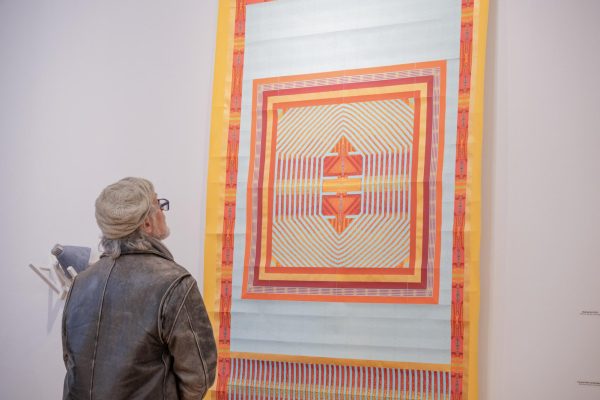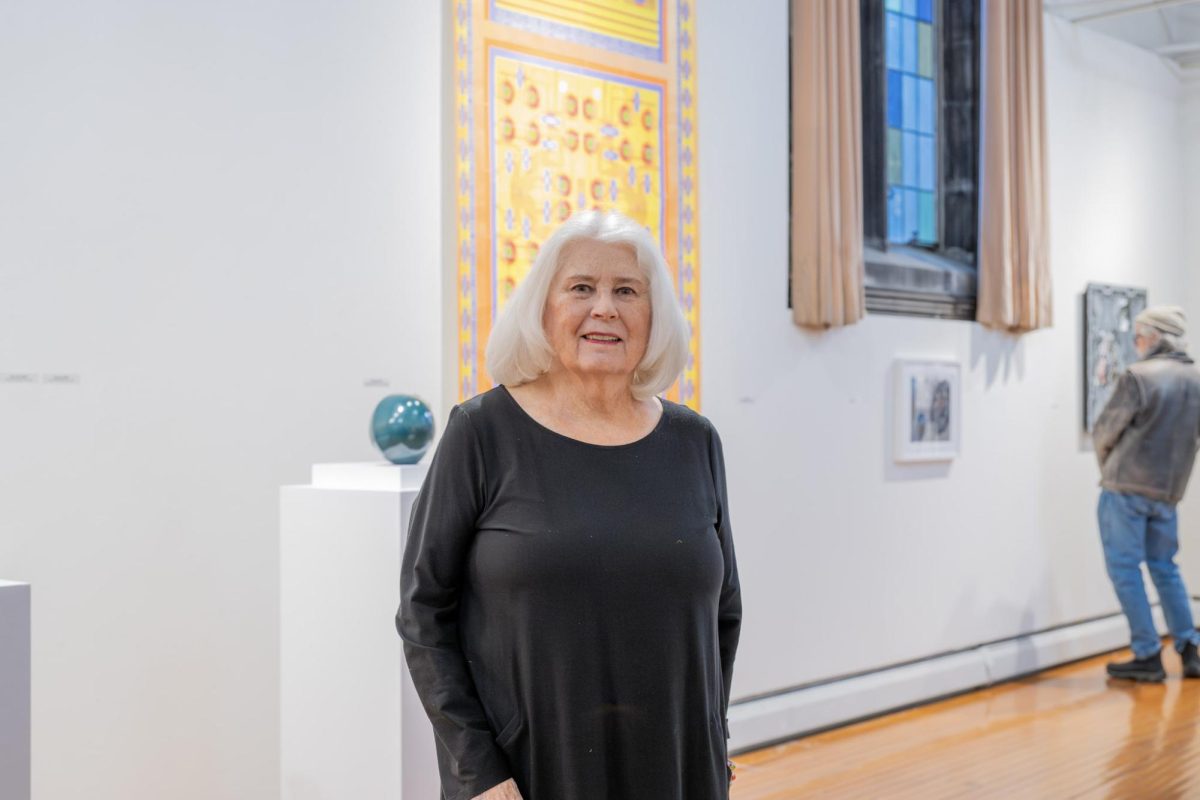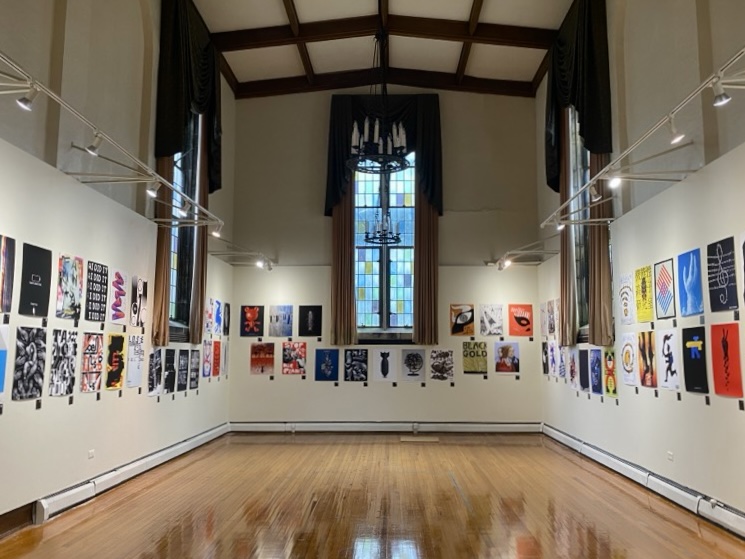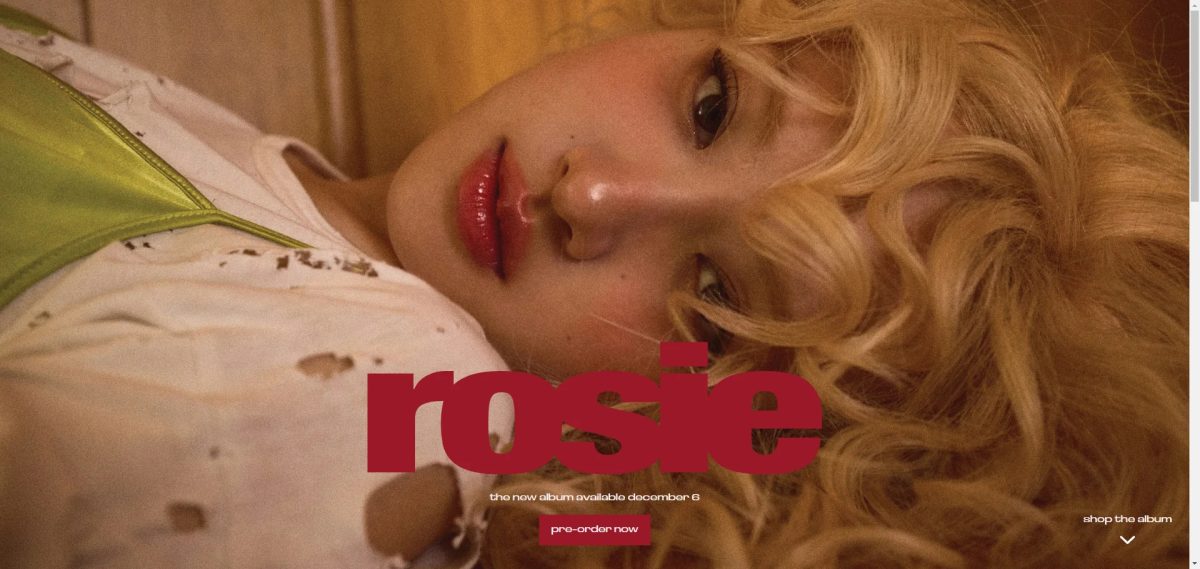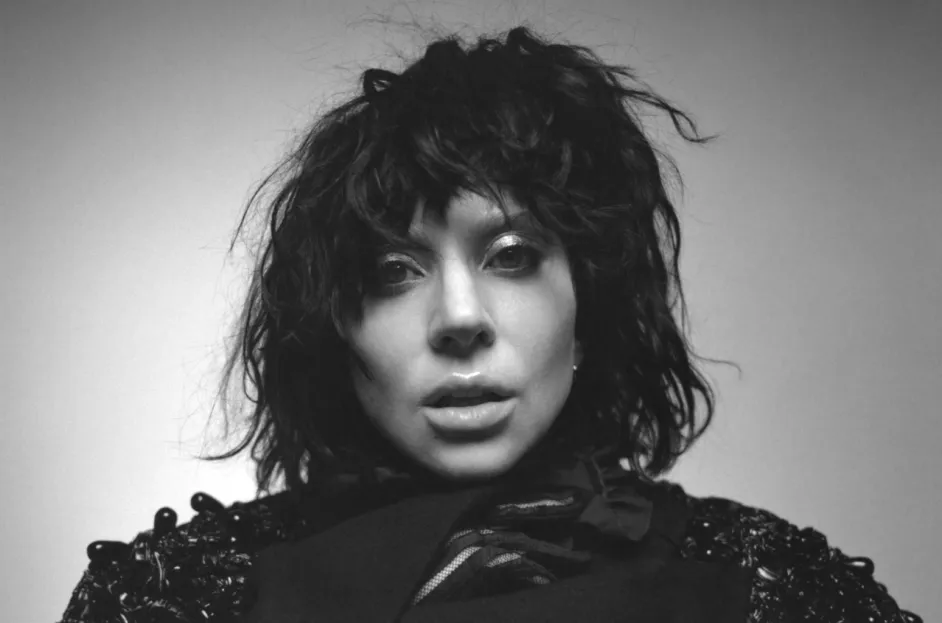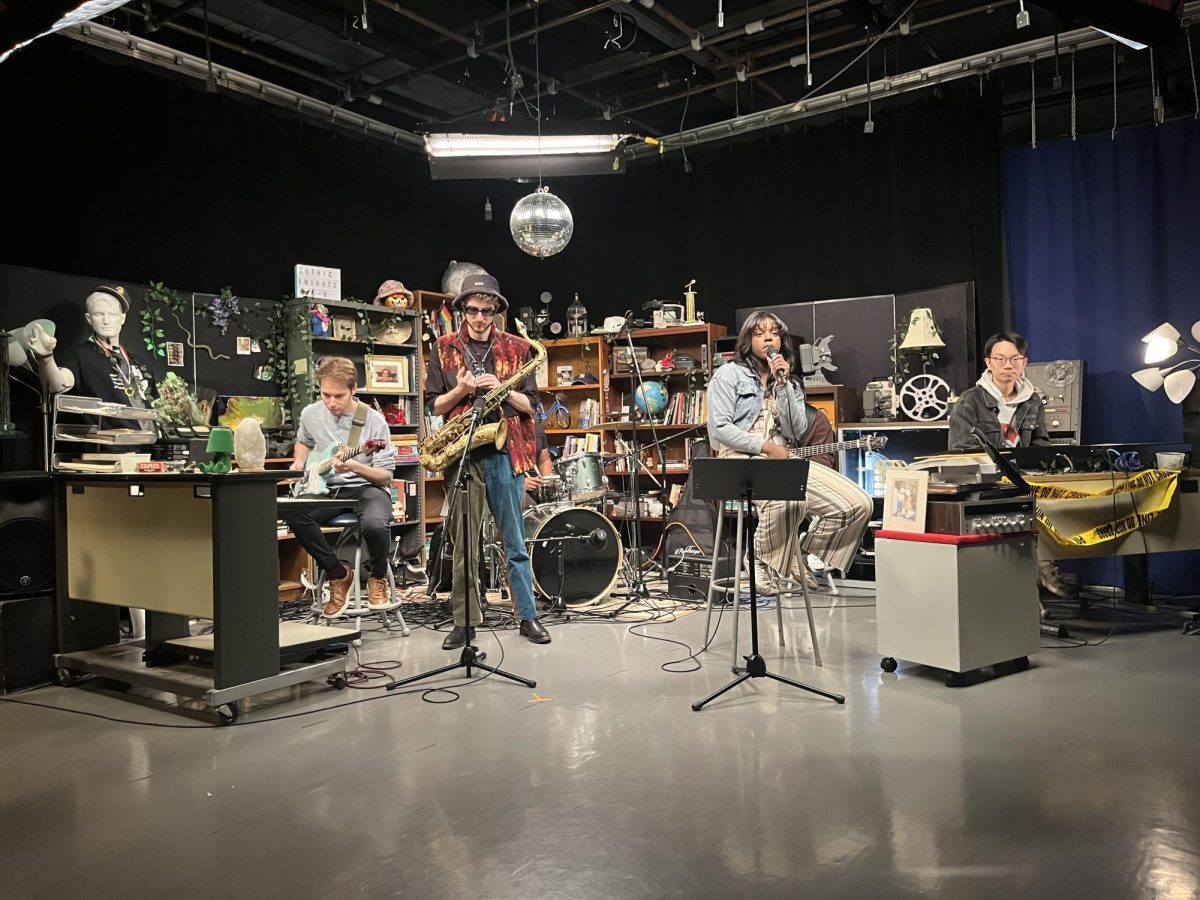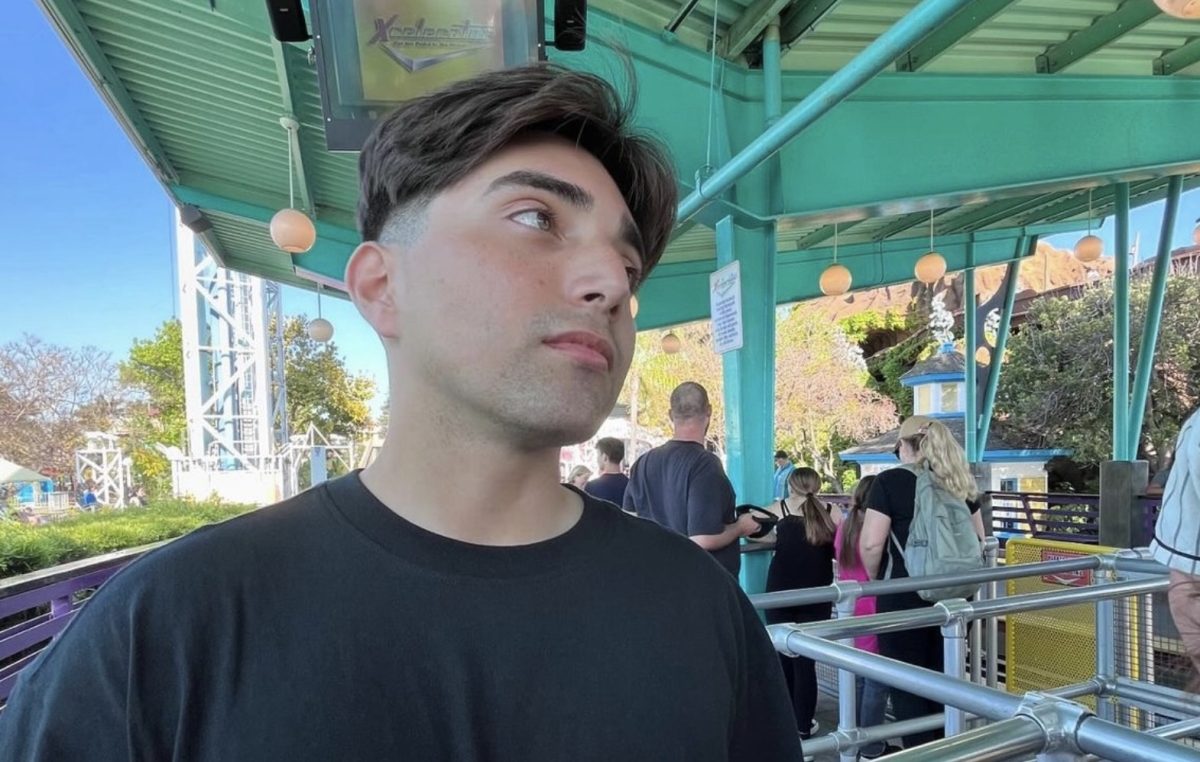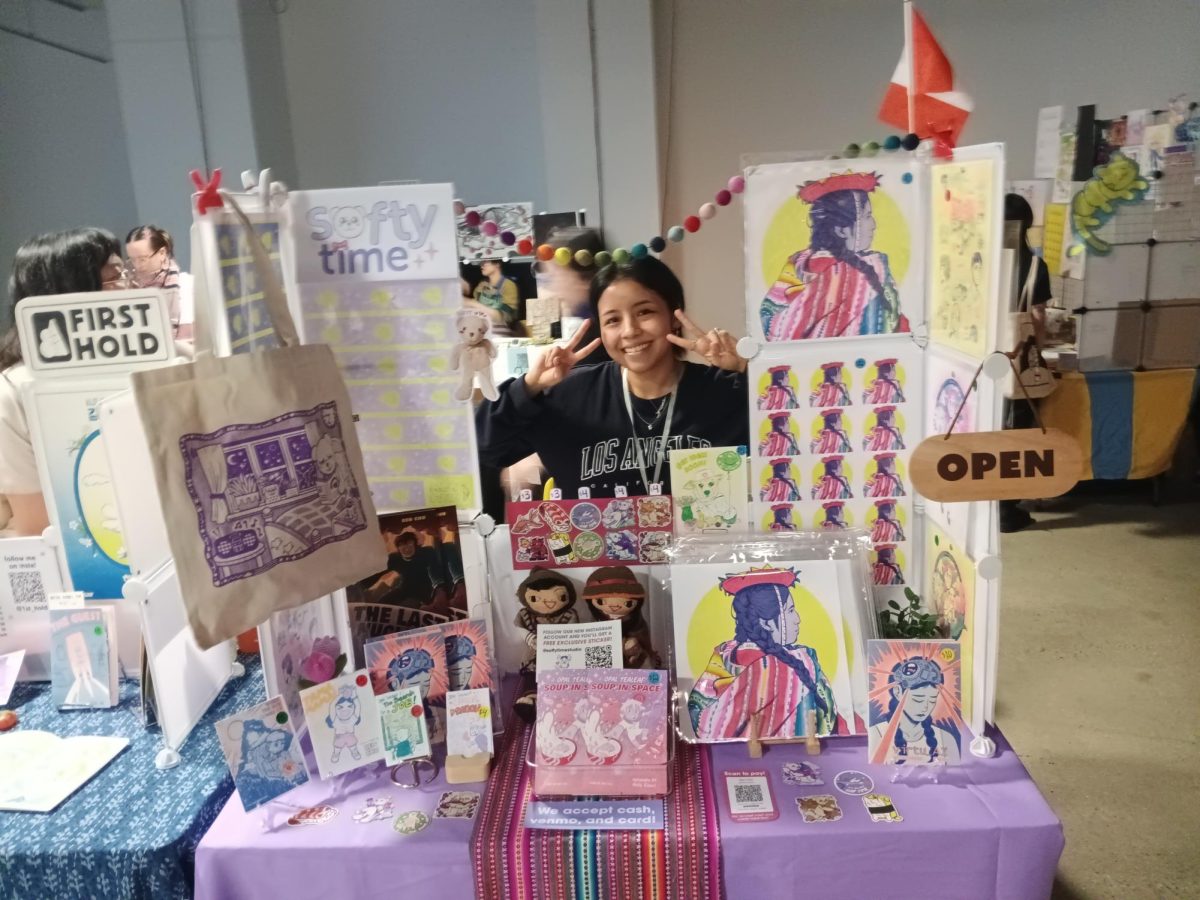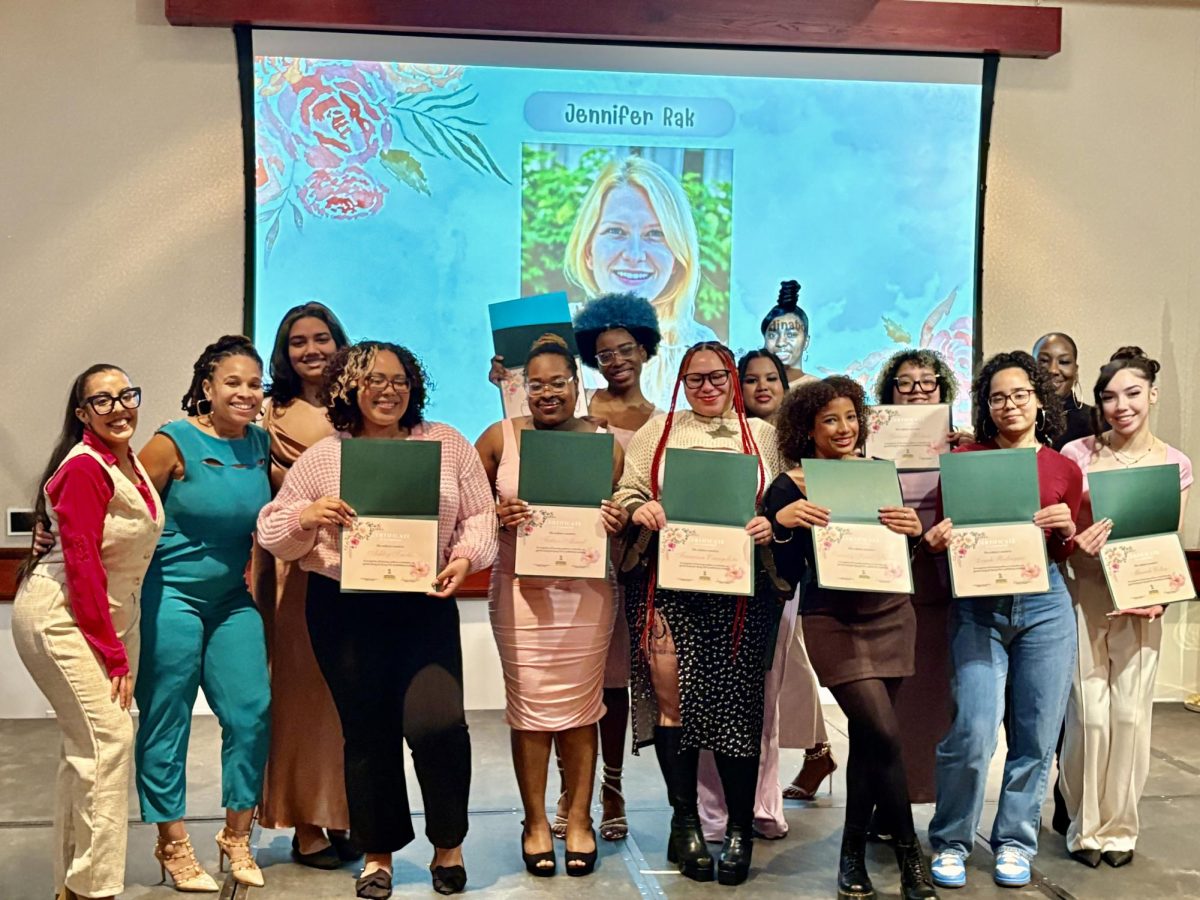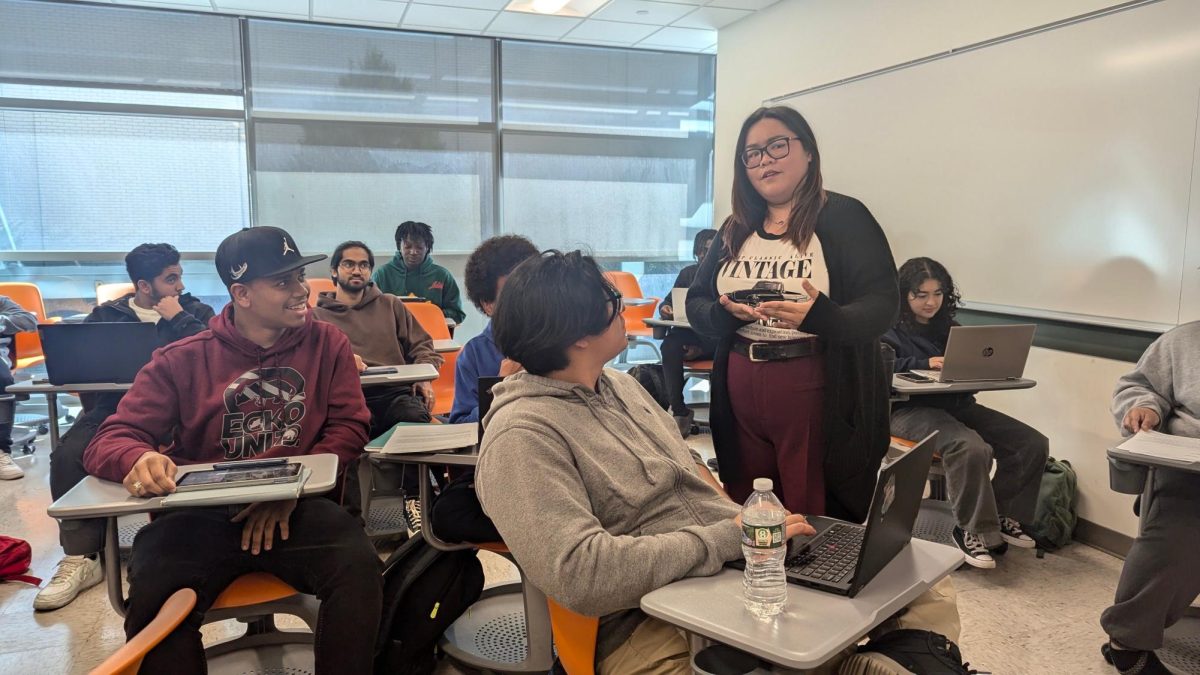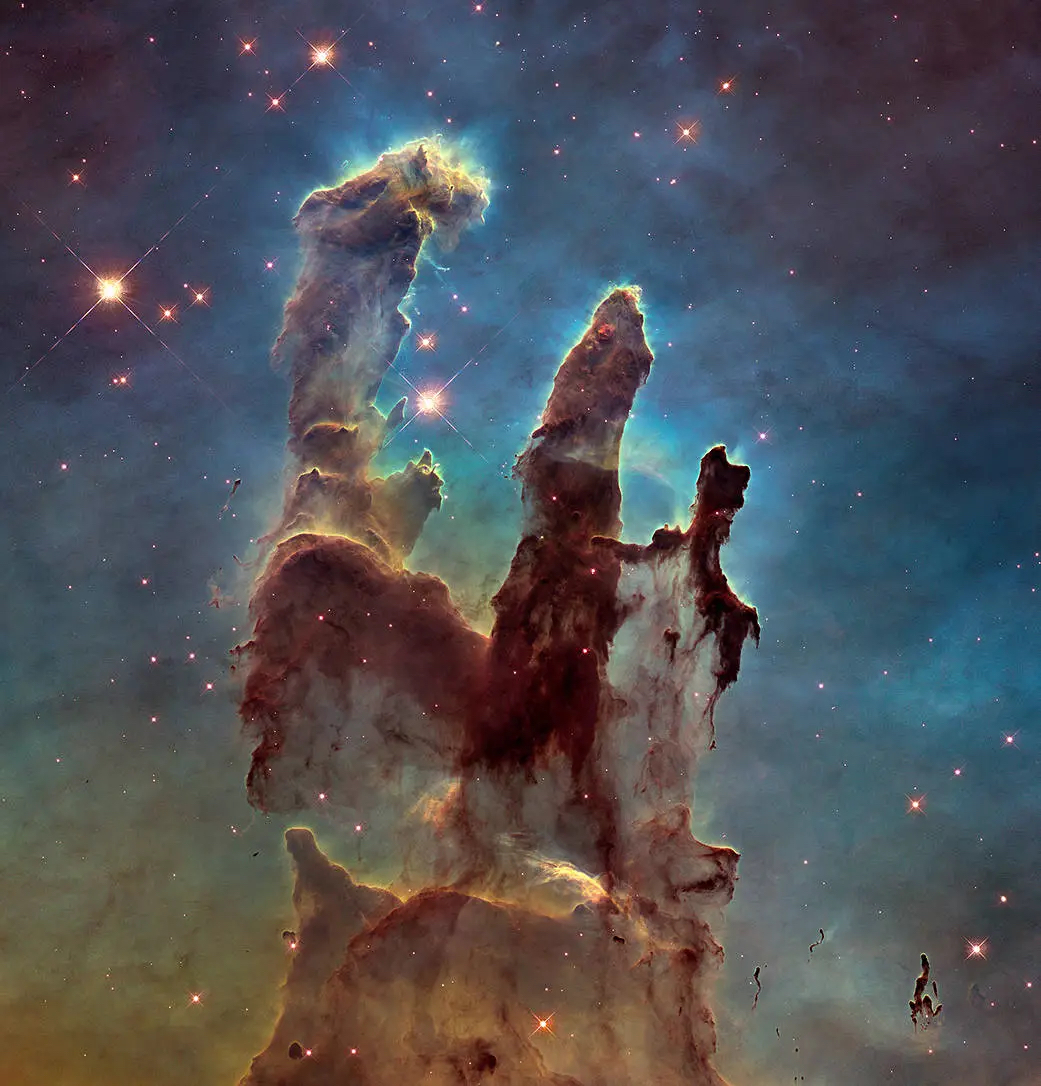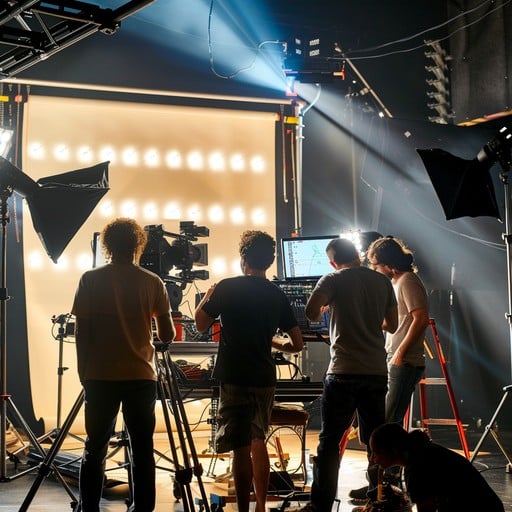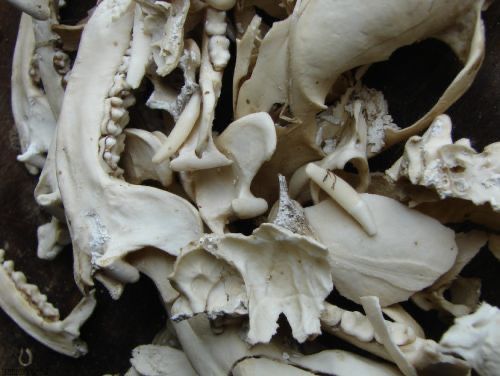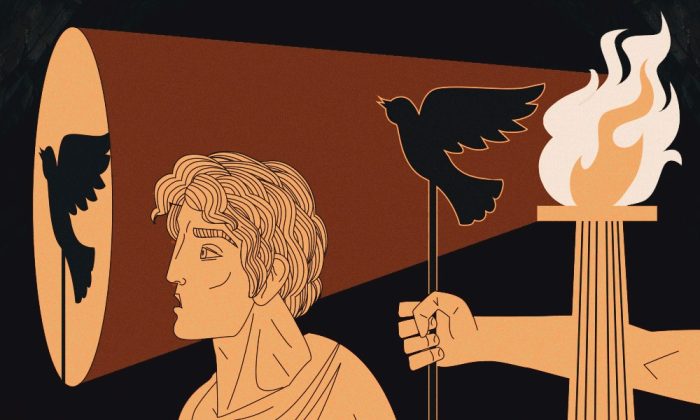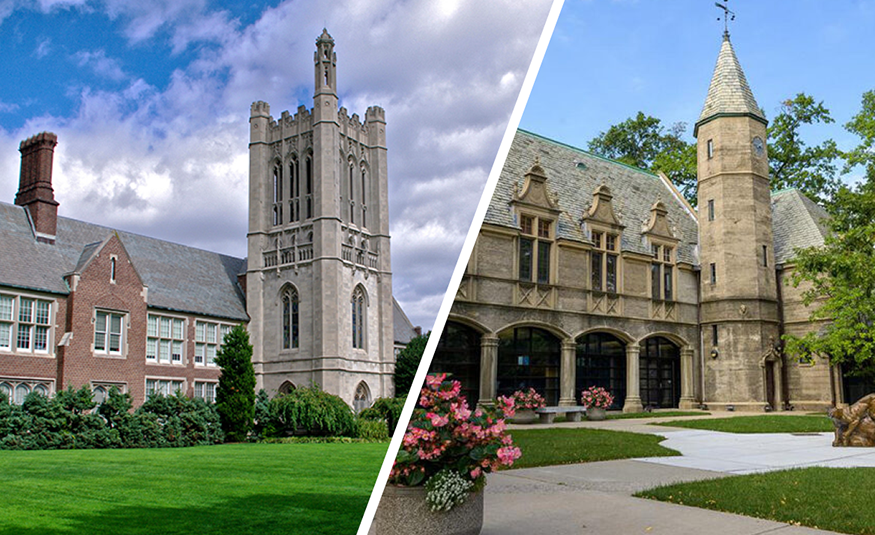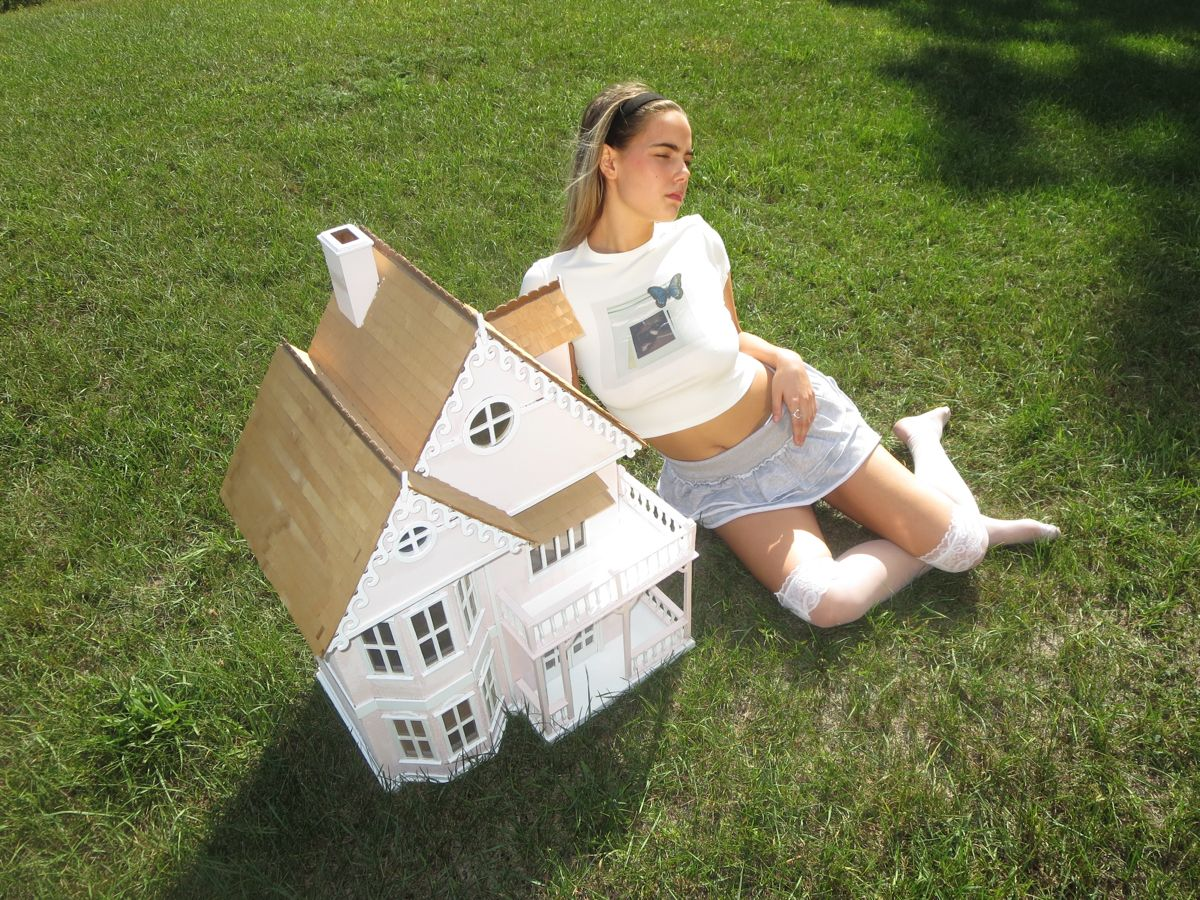Half a century ago, we could only imagine what the future would be like. Today, in 2025, that past future is already among us; it is our present. Those past depictions of futuristic flying cars, living robots, and Android Dreams (Bending the Grid: Myth, Memory and Android Dreams, 2016) transitioned to technology being now completely woven into our daily lives. However, the fantasies about a brave new world did not fade but updated with the new tech discoveries and remained a hot topic of discussion.
On January 30, 2025, the NJCU Lemmerman Gallery had the pleasure to present “Pat Lay: Hybrid,” a solo art exhibition by a Jersey City-based artist and retired professor of art at Montclair State University—Pat Lay, a professional creator since 1968. Her work compares and explores the connections between elements of tech advancement and common features of art throughout different cultures around the globe, unifying it together within a symbiotic artwork. That is the first time NJCU hosted and collaborated with Pat Lay; her exhibition is available to the public from January 30 and running until March 7, 2025, in Hepburn Hall, Room 323, 2039 Kennedy Blvd., Jersey City, NJ 07305.
I did not miss a unique opportunity to talk with Patricia Lay on the exhibition opening day and asked her a few questions. She revealed that she was born into a family of artists and architects. During World War II, her mother was a designer of electronics and computer solid-state circuit boards—elements of precision, geometric structure, innovation, and pattern of interaction among the pieces—those traits often associated with engineering and design left a huge print on the style and deeply influenced the subject matter of Pat Lay’s works.
–After I found out what your parents did for a living, I could guess that you had a very strong connection with them. Is that true?
Pat Lay: Yes, they were very supportive of me being an artist; I learned a lot from them.
—Like your mother was designing electronics and computer circuit boards, it’s also depicted in your artwork. Was it your conscious decision to continue your mother’s work?
Pat Lay: It was a sort of accident; I didn’t even realize that my artwork was coming from that place, but I think it was.
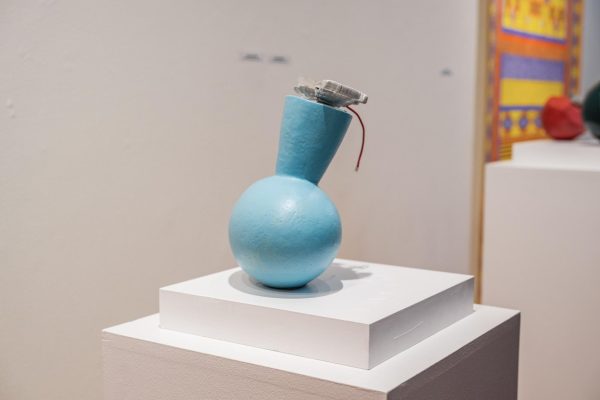
Cross-cultural themes: Mandala, Thangka and Vyshyvanka
The time when Pat Lay absorbed cross-cultural motifs, reflected in her artistic exploration, began with travels with her family around the world during her childhood. South Asia and Southeast Asia countries, such as Thailand, Cambodia, and India, raised her interest in exploration of various artistic traditions, particularly those with strong Buddhist and spiritual traditions. Motifs associated with Hinduism and Buddhism, like the kaleidoscopic composition of Tibetan mandala and Thangka, are keys in her work. However, it seems that such designs can be found in other cultures around the world.
–When I looked at your work from afar, I thought, what a beautiful tapestry in South American color and composition! Have you ever thought about doing tapestry?
Pat Lay: I was trying to turn it into a tapestry, but I haven’t been very successful in finding a place that would do it. I think part of the problem is that there are too many colors. It would take a long time and require a lot of professionalism to set up really good and high-quality loan textiles with so many colors; not many companies do it, but I would love to do my work as tapestries.
I also found a similarity with an important part of Ukrainian cultural heritage—Ukrainian vyshyvanka, a traditional pattern variation embroidered on a shirt or blouse that is highly symbolic and rooted in traditional folk often carries spiritual and protective meanings within its variety of motifs, including floral designs, abstract and geometric shapes, animals, or birds. A central figure in the Russian avant-garde and the leading Suprematist, Kazimir Malevich, with his iconic Black Square, has strong ties to Ukrainian culture that later greatly influenced his work, which at the same time influenced many of the following contemporary art movements.
African American quilts, which have significantly influenced modern design, are also brightly colored and almost always geometric patterns, which, without a doubt, can be included in cross-cultural references that can be found in all cultures throughout the world. African art inspired such avant-garde art movements as Cubism, Fauvism, German Expressionism, and Primitivism. So Pat Lay explored the traditional art of the past to reflect it in her own way as the art of the future. Even the same connection can be traced with the Gothic architecture in NJCU Lemmerman Gallery in Hepburn Hall, with its stained glass windows repeating geometric patterns and variety in colors.

Sculpture: The Future Among Us
But the echo of the past is always still sounding in the future. Movements like Dadaism and the machines of Futurism, especially the movie Metropolis (directed by Fritz Lang, Parufamet, 1927), are traced in Pat Lay’s work and, like a bridge, connect traditional artistic forms, design patterns, and new computational and technological concepts. That hybridity considers the human condition interfacing with nature and technology and questions the role of God in that New World, since a man became almost a hegemon creator.
“A place, created in response to our world of technological advancements and digital progress. These works continue to question and critique the paradoxical relationship between man and technology. I have taken a religious icon, the Tibetan thangka, and have transformed it into a contemporary icon that speaks to our obsession with technology.” (Pat Lay statement in Arts Morris catalogue: Approaching VIBRANCY. 2018.)
—Your work is very complex with lots of cultural references behind it. You mentioned a religious influence, mostly Buddhism. Could you tell a bit more about how it is? Do you follow any religious dogma?
Pat Lay: Buddhism is something that I am very interested in; it is very beautiful. But my work is mostly focused on the aesthetic part; I show Buddhism not through religion but through the art. I am not a religious person, but I understand the importance of its spiritual part.
—What are your thoughts on our future and the question on rapidly developing AI?
Pat Lay: In a sense of technology, it’s going to make things easier, but it might have some issues and problems as well, so we don’t know yet; it’s too soon. The IA has its good points, but it’s so new. I am not going to say it’s a bad thing, but I don’t think we really understand yet where it’s going to go.
—Is your work rather a critique or your passion?
Pat Lay: It’s both. At some point I am critiquing our obsession with technology and its possible consequences, but I have been doing that art for so many years, so it’s definitely my passion.
The important part of Pat Lay’s work that must not be missed. Sculptures are mainly inspired by Brancusi with its simple and suprematic shapes, blurring the distinctions between what is an organic living form and a machine.
–In addition to scrolls, collages, prints, and works on paper, you were a professor of Fine Arts at Montclair State University for over 40 years and have received three grants for sculpture: two from the New Jersey State Council on the Arts Fellowship in 1984 and 1984 and another from the American Scandinavian Foundation in 1996. Do you have assistants who help you, especially with your sculptures, or do you do everything yourself?
Pat Lay: Yes, I do have assistance. I almost always work with assistants and art workshops, especially when it comes to sculptures.
